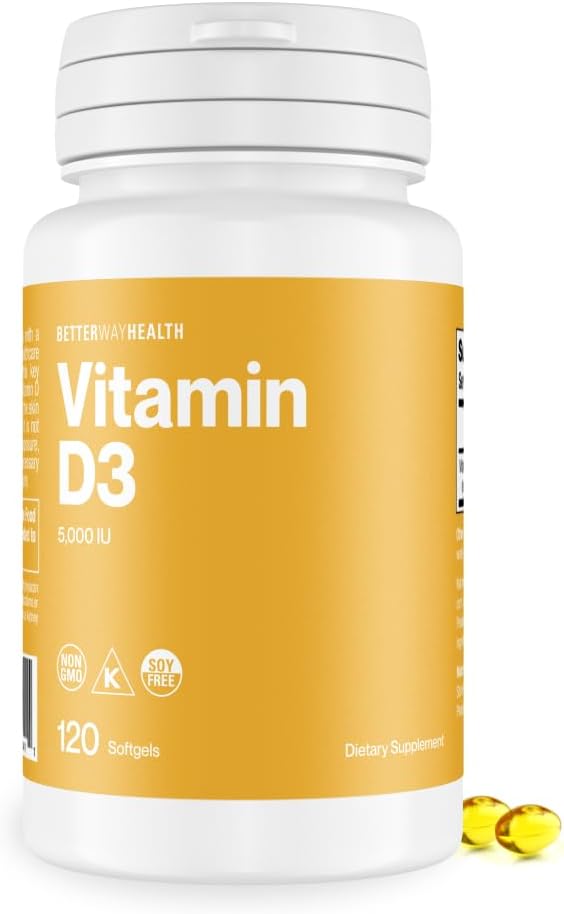






Price: $19.95
(as of Apr 06, 2025 20:31:26 UTC - Details)
What's the Best Way to Take Vitamin D: A Comprehensive Guide
Introduction
Vitamin D is often referred to as the "sunshine vitamin" because our bodies can produce it when exposed to sunlight. However, many people struggle to get enough vitamin D, leading to questions like, "What's the best way to take vitamin D?" In this article, we will explore various methods of obtaining vitamin D, including supplements, food sources, and the importance of sun exposure. By the end, you'll have a clear understanding of how to effectively incorporate this essential nutrient into your daily routine.
Understanding Vitamin D: The Basics
What is Vitamin D?
Vitamin D is a fat-soluble vitamin that plays a crucial role in maintaining bone health, supporting immune function, and regulating mood. It exists in two main forms: D2 (ergocalciferol) and D3 (cholecalciferol). While both forms are effective, D3 is often considered the superior option for raising vitamin D levels in the body.
Why Do We Need Vitamin D?
Vitamin D helps the body absorb calcium, which is vital for strong bones and teeth. It also plays a role in muscle function and may help reduce the risk of chronic diseases. Many people are unaware of how crucial this vitamin is, which is why understanding the best ways to take vitamin D is essential for overall health.
The Best Ways to Take Vitamin D
1. Sunlight Exposure
The Natural Way to Get Vitamin D
One of the most effective ways to increase your vitamin D levels is through sunlight exposure. When your skin is exposed to UVB rays from the sun, it synthesizes vitamin D. Aim for about 15 to 30 minutes of sun exposure a few times a week, depending on your skin type and location. Remember, it's important to balance sun exposure with skin protection to avoid sunburn and reduce the risk of skin cancer.
2. Vitamin D Supplements
Choosing the Right Supplement
If you're unable to get enough vitamin D from sunlight or food, supplements are a great option. Vitamin D supplements come in two forms: D2 and D3. While both are effective, D3 is usually recommended for its superior efficacy. Always check the dosage and consider discussing with a healthcare provider to determine the right amount for your needs.
3. Dietary Sources of Vitamin D
Foods Rich in Vitamin D
Incorporating vitamin D-rich foods into your diet is another effective way to boost your levels. Some excellent sources include:
- Fatty fish (like salmon, mackerel, and sardines)
- Cod liver oil
- Fortified foods (such as milk, orange juice, and cereals)
- Egg yolks
- Cheese
Including these foods in your meals can help you meet your daily vitamin D needs.
4. The Role of Vitamin D in Immunity
Boosting Your Immune System
Vitamin D is known for its immune-boosting properties. Adequate levels of vitamin D can enhance your body’s ability to fight off infections. During flu season or times of heightened illness, ensuring you have enough vitamin D can be particularly beneficial.
5. Vitamin D and Mood Regulation
The Sunshine Vitamin and Mental Health
Studies suggest that vitamin D may play a role in mood regulation and mental health. Many individuals experience a drop in mood during the winter months when sunlight exposure is limited. Taking vitamin D supplements or ensuring adequate intake during these times could help improve your mood and overall mental well-being.
6. Vitamin D Deficiency: Signs and Symptoms
Recognizing the Signs
Knowing the signs of vitamin D deficiency is essential for maintaining your health. Common symptoms include fatigue, bone pain, muscle weakness, and mood changes. If you suspect a deficiency, consider consulting a healthcare professional for testing and advice on the best way to increase your vitamin D levels.
7. How to Test Your Vitamin D Levels
Monitoring Your Levels
If you're concerned about your vitamin D levels, getting tested is a wise decision. A simple blood test can determine your current levels, helping you and your healthcare provider create a tailored plan to address any deficiencies.
Conclusion
In conclusion, understanding "what's the best way to take vitamin D" is crucial for maintaining optimal health. Whether through sunlight exposure, supplements, or dietary sources, ensuring adequate vitamin D intake can have significant benefits for your bone health, immune function, and overall well-being. By incorporating these methods into your daily routine, you can effectively boost your vitamin D levels and enjoy the associated health benefits. Remember, always consult a healthcare professional before making significant changes to your vitamin D intake.
Incorporating these tips will not only help you understand the best ways to take vitamin D but also empower you to take charge of your health!
Daily Dose of Sunshine Without the UV Risks: Provides a safe and convenient way to maintain optimal Vitamin D3 levels all year round; ideal for individuals with limited sun exposure or those living in less sunny climates
Essential for Bone Health and Calcium Absorption: Supports the body’s ability to absorb calcium and phosphorus, essential for building and maintaining strong bones and teeth; helps ensure bone density and overall skeletal health, especially for aging adults
Immune System Support for Optimal Health: Boosts immune defenses by activating key immune functions; helps fend off seasonal illnesses and supports year-round immune health, making it a valuable addition to your daily wellness routine
Enhanced Bioavailability with High Potency Formula: Formulated with extra virgin olive oil to enhance absorption and ensure your body utilizes Vitamin D3 effectively; high-potency softgels provide fast replenishment of Vitamin D levels
Quality You Can Trust — Derived from Lanolin: Sourced from high-quality lanolin and rigorously tested for purity and potency; ensures optimal Vitamin D levels to promote long-term bone and overall health
